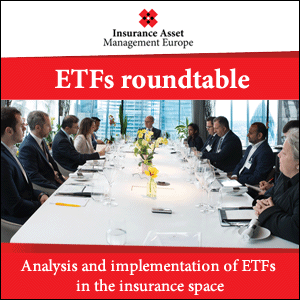
LATEST NEWS
- Global insurance M&A activity hits 10-year high
- RSA Group completes record £6.5bn buy-in with PIC
- Global asset managers not investing responsibly, ShareAction argues
- Total assets of Chinese insurance companies rise by 9.1% to RMB 27.1trn
- Total assets of euro area insurance corporations fall to €8,075bn
Trustees urged to consider data limitations when reviewing insurers' climate progress

Written by Adam Cadle
14/03/2023
Defined benefit (DB) pension scheme trustees have been urged to focus on the detail in insurance firms' climate reporting when selecting a firm for risk transfer, after research from Hymans Robertson highlighted key data limitations.
The report explored how DB pension schemes can best use the information in insurers’ Taskforce on Climate-Related Financial Disclosures (TCFD) reports as they make decisions about choosing a firm to insure their members benefits.
As part of this, it outlined a number of challenges scheme trustees face when looking at data, explaining that while many schemes might be encouraged by insurers’ headline targets and commitments, understanding which firm is a good fit for their needs, will come from the ability to critically understand and assess the data in each TCFD report.
For instance, the research revealed that when firms can use different metrics in their report, which may lead to a scheme not comparing like-for-like, with the potential for trustees to misunderstand an insurers’ approach as a result.
It also highlighted concerns around data limitations, particularly in relation to scope 3 emissions, revealing that data coverage varies between each insurer and different asset classes, ranging from 20% in some asset classes up to 100% in others.
The firm also noted that whilst data coverage is expected to improve over time, this may mean that reported metrics get worse before they get better.
Hymans Robertson head of ESG for risk transfer Paul Hewitson stated: “Ultimately, for DB pension schemes who are on a journey to buyout but, are also wanting to address climate risks, the devil is in the detail.
"Schemes could be forgiven for relying on the bolder statements in insurers TCFD reports.
"However, to really make an informed choice and choose a match that’s right for them, they should make sure they compare both how each insurer plans to transition their assets to meet targets, with the insurers’ actual progress.
“The availability of this information now gives schemes the opportunity to make even more informed decisions but, it requires a focus on the long-term. Instead of concentrating on the short-term goal of being fully funded to buyout, a consideration should be the role that insurers will play over a longer timeframe.
"As schemes become more familiar with the access to information in the TCFD reports, looking beyond the headlines should become second nature. In the meantime, as familiarity is being established, schemes will find decision-making easier if they note the differences between each insurers’ approach to how and what is measured.”
However, Hewitson also stressed the need for trustees to also consider the role of social and governance factors when assessing an insurance firm to partner with on a journey to buyout, arguing that the TFCD reports add an "additional layer of information to aid their decision-making".
"By combining an understanding of all these factors, schemes should be able to maintain a thorough and informed longer-term view that will help them to fulfil their duty to act in the best interests of members," he stated.
"It will enable them to choose an insurer that they believe can fulfil the responsibility of paying its members’ benefits long into the future.”










